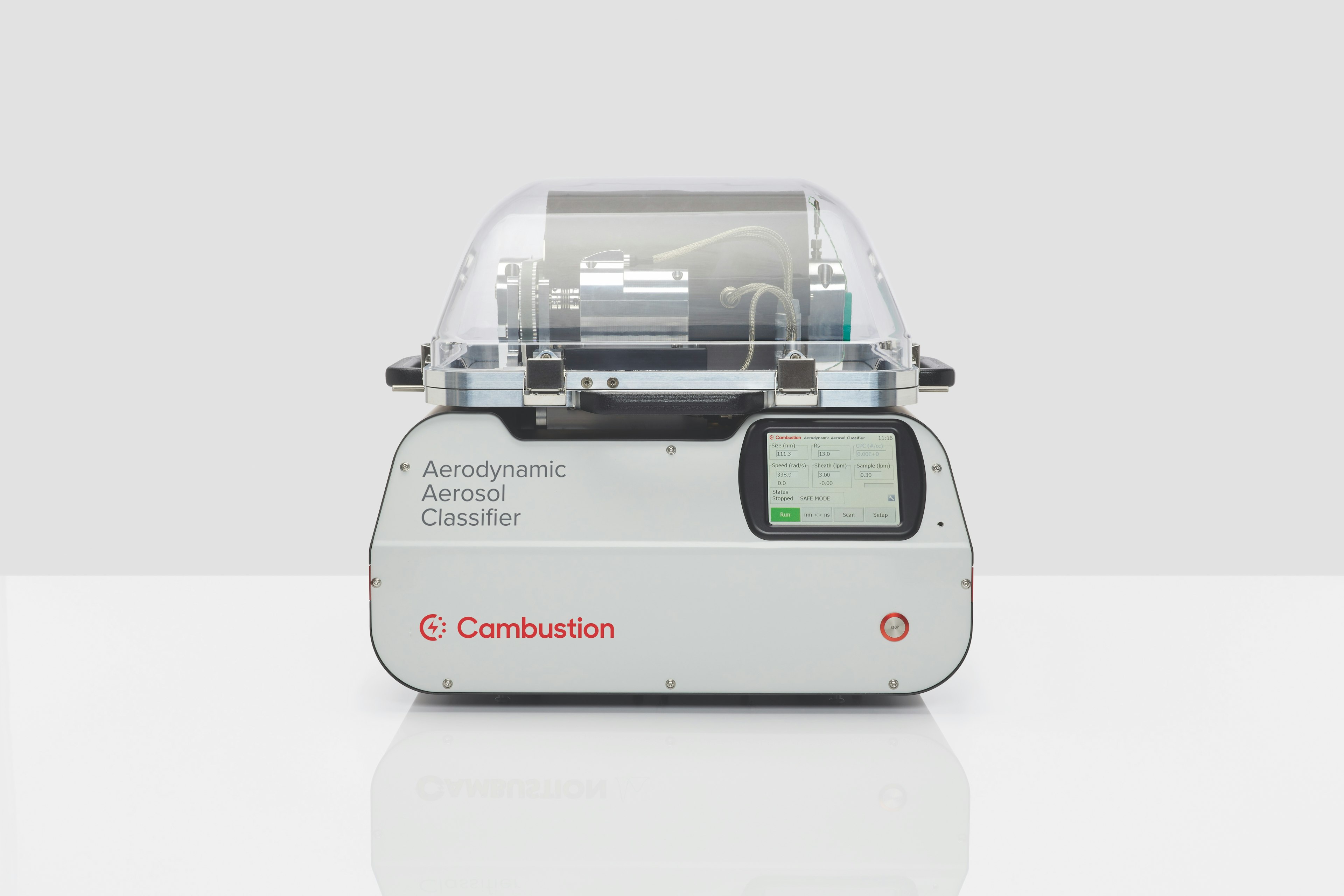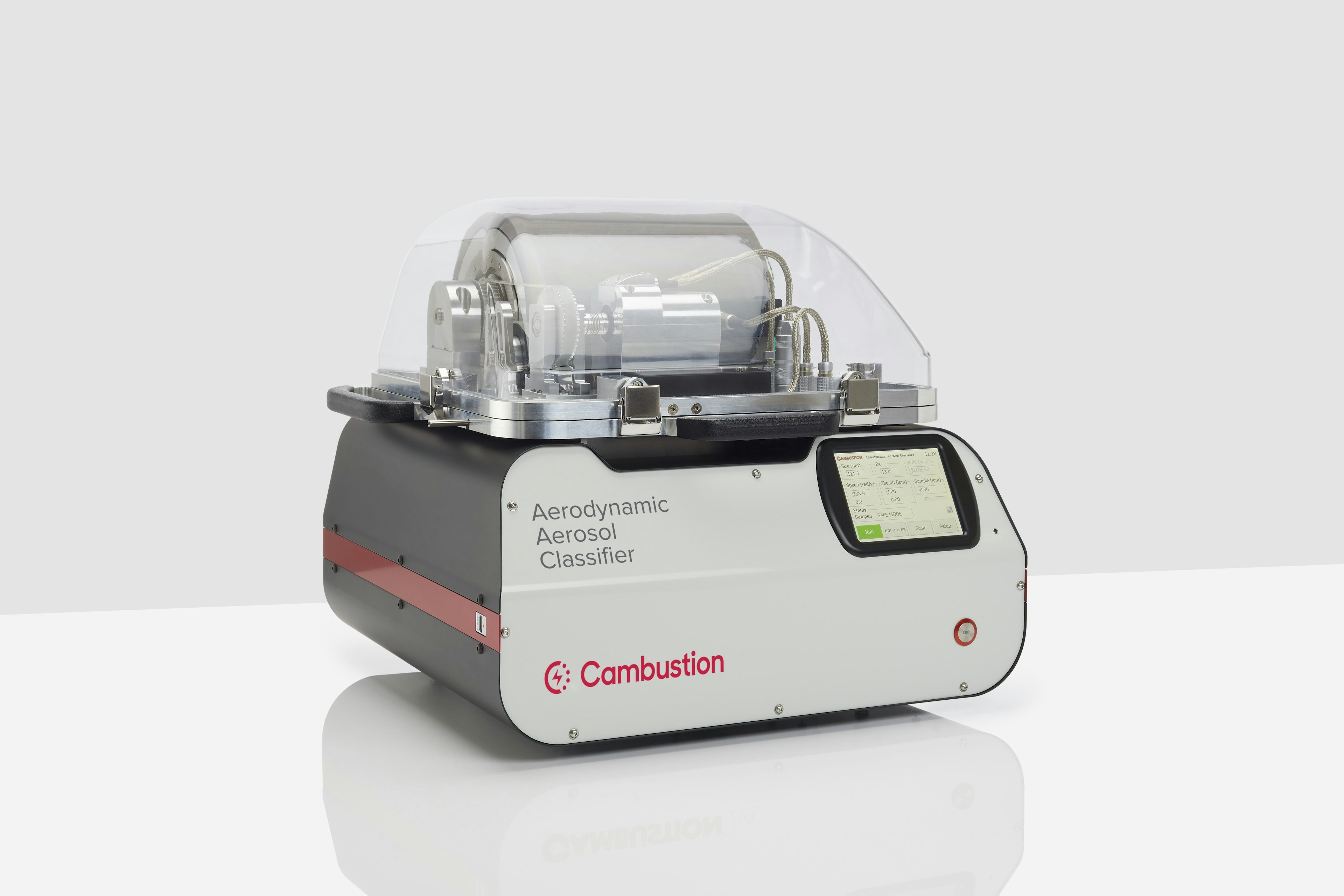AAC | Aerodynamic Aerosol Classifier
The Aerodynamic Aerosol Classifier
Launched in 2016, the Aerodynamic Aerosol Classifier is a unique aerosol instrument, capable of classifying particles between 25 nanometers and > 7 microns (PM5) according to their aerodynamic diameter.
As the AAC classification principle is independent of particle charge, no charger or neutralizer is required for operation. Moreover, the output is not affected by multiple charging issues or by low charging efficiencies, ensuring that only a single aerodynamic peak is present, and that particle transmission remains high across the entirety of the wide size range.
Whilst in the past impactors allowed selection of small particles, and virtual impactors the selection of large particles, only the Cambustion AAC allows the selection of particles in a finite range by aerodynamic particle size.
The working principle is explained in this animation.
Applications
Production of a truly monodisperse aerosol:
As an improved alternative to the Differential Mobility Analyser (DMA), offering a wider size range, higher transmission efficiency, and no multiple charging artefacts.
Where aerodynamic diameter is the metric of choice (inhalation / lung penetration, particle deposition, in-vitro / lung cell exposure studies).
As a calibration aerosol for optical devices, including Optical Particle Counters (OPCs), optical spectrometers, condensation particle counters (CPCs) and WIBS. The AAC is included in the ISO 21501-4 standard for the calibration of OPCs: "Determination of particle size distribution — Single particle light interaction methods — Part 4: Light scattering airborne particle counter for clean spaces"
When using complex or large aerosols where charge correction would be problematic. For example, measuring the size and / or charge state of dust for vacuum cleaner development.
In combination with other equipment:
With a Condensation Particle Counter (CPC) to form the Scanning Aerodynamic Size Spectrometer, or SASS (the equivalent of the Scanning Mobility Particle Sizer or SMPS). The pairing of the AAC and CPC is possible via integrated software and allows the determination of aerodynamic particle size distributions (APSD) from first principles with high accuracy and high resolution. The Cambustion 5210 CPC allows counting over the full size range of the AAC, even up to several microns.
With a Centrifugal Particle Mass Analyser (CPMA) or DMA, and a CPC – to study nanoparticle structure (the fractal shape / effective density of non-spherical aerosol particles.)
As a low-pass separator / variable impactor:
A reversible user modification now allows the AAC to be used as a “variable impactor”, such that the particles smaller than the setpoint (which would normally be lost in the sheath flow and internal filters) may be intercepted and used for further experiment.
AAC Brochure
For more information on the operating principle, applications, advantages, and operating range of the AAC, download a brochure. Please contact Cambustion for further information and prices.
Need more information? Connect to an expert
Key Application Notes
| Title | Data Type | Download File | Size | Last Updated | |||||
|---|---|---|---|---|---|---|---|---|---|
| Title | Using the Aerodynamic Aerosol Classifier (AAC) as a low-pass separator | Data Type | Application note | Download File | aac04v01-using-the-aac-as-a-low-pass-separator.pdf | Size | 911.90 KB | Last Updated | |
| Title | Measuring size-resolved particle penetration through face mask materials | Data Type | Application note | Download File | aac03v03-size-resolved-particle-penetration-face-masks.pdf | Size | 708.53 KB | Last Updated |
AF10 Aerosol Flowmeter
The AAC is compatible with the new AF10 standalone aerosol flowmeter, offering real-time measurement of the aerosol flow (via orifice delta P) which can be used to maintain constant resolution on the AAC and monitor performance of other connected equipment.
Find out moreAAC Animation
The AAC may be thought of as translating the DMA into a rotating frame, where the electrical force on the particles is replaced by a centrifugal force.
AAC Tutorial
A practical tutorial on the Aerodynamic Aerosol Classifier, presented by Dr Jon Symonds, originally produced for the virtual AAAR conference 2020. Includes taking data, and cleaning.
What is Aerodynamic Diameter?
The AAC classifies particles by their aerodynamic diameter. But what is aerodynamic diameter?


